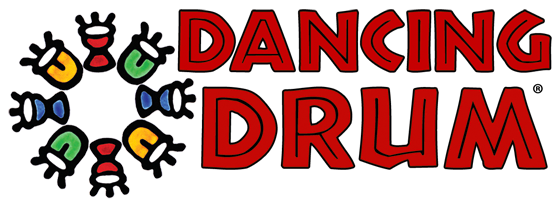- Continue Shopping
- Your Cart is Empty
How Drumming Can Improve School Culture & Educational Outcomes
Since beginning Dancing Drum in 2002, we have seen that drumming can play an important role in the development of young people into successful students. We believe that drumming creates happy students, and happy students create successful schools.
Drumming helps schools establish a trend of success and positive energy that can carry throughout the entire school day. A student who excels at drumming experiences a boost in confidence that carries out of music class and into the regular classroom. If a student can succeed at drumming, he or she can surely succeed in other areas at school.
Ensemble drumming supports students' social and emotional development because it's a positive, non-competitive, team-building activity that everyone can participate in together, regardless of age or ability. Playing a drum affirms an individual’s existence. It says “I AM!” and it’s an expressive outlet that helps to release emotions and stress in a positive way. A large majority of students perceive drumming as cool, and it’s a physically demanding activity that they thoroughly enjoy. Teachers can explicitly address student social and emotional development through programs like "Drumming Up Character".
In addition to the social/emotional benefits of drumming, schools can use the engagement piece of drumming as a “hook” to get kids interested in all kinds of other subjects: math, language arts, social studies, geography, history, and more.
Early readers can benefit from Dancing Drum's "Rhythm Phonics" teaching method, which links syllables of words to sounds played on drums. Studies have clearly shown that rhythm and reading are fundamentally connected, and regular participation in organized drumming lessons can build these connections with intention. Rhythm can be used as a tool for reading comprehension and composition.
Drumming is fundamentally an experience of rhythm-making. Rhythms contain a wealth of mathematical data that can be gathered and interpreted. We can explore and create new rhythm patterns. Adding and subtraction, fractions, sequences, formulas, and graphs can all be studied through drumming and rhythm. This rhythm-math connection can help get students excited about math lessons by building purpose and meaning through the lens of a beloved subject: drumming!
Social studies and geography are also areas of rich cross-curricular connection. Literally every country in the world has at least one drumming tradition, and many countries have multiple, deep drumming traditions to learn about. Even here in the United States, we have many subjects of potential study. We can learn about the history of the drum kit, which was invented in New Orleans when band leaders combined the sounds of many players into one "contraption". We can learn about bongo and conga-fueled Salsa music, invented in New York by Cuban and Puerto Rican immigrants. When studying the American West, we can learn about the wide variety drums and rhythms played by Native Americans. There is a lifetime of exploration ready at our fingertips through the medium of drumming.
The science of sound is yet another interesting area of study that can be explored through drumming. How are drums built to create sound? What factors contribute to the different tones that drums make? What are the characteristics of sound waves?
Peeking through the door of the music classroom, drumming may appear to be a fun diversion, like recess or free play, however, while we're drumming, we're working across multiple levels of intelligence. The "fun" layer is the part that engages students and gets them to embrace the experience with enthusiasm. The deeper layers are about creating connections, not only to academic areas, but to each other and to our community of peers. Drumming can help fulfill a basic human need: community and connection. That's why we say that drumming creates happy students, and happy students create successful schools.





